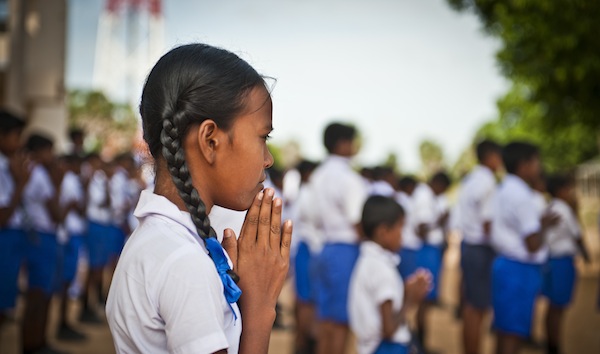
Mullaitivu, Sri Lanka, May 2013. Seshanka Samarajiva for The Picture Press
Thirty years ago today, my parents were heroes. Until yesterday, I didn’t even know this.
My mother who worked in Fort back then, saw buildings going up in smoke, tyres burning and the chaos. Her Tamil colleagues were given priority office transport and sent home first. One colleague, a Tamil lady with a nose ring and a large pottu refused to take it off despite everyone urging her to do so – for her own safety. My mother and her boss decided that it would be best if they dropped this lady off at her home in Kotahena themselves to be on the safe side even though my mother lived in Nugegoda and her boss in Ratmalana.
My father had a very close friend who was Tamil and lived in Wellawatte with his wife. He took them both to Ratmalana where a close friend of his, the chief priest of a large Buddhist temple, hid my father’s friends in the temple and gave them shelter. Both Wellawatte and Ratmalana saw some of the worst of that July.
I was born after the 1983 riots so I have no memory of this dark time. Like many things that our school history books do not include, the 83 riots were never mentioned so I didn’t learn about it in school. I learnt about it from books, from articles, from friends who did remember that time. But it always had an air of something that happened a long time ago and I, like many Sinhalese of my generation will never probably understand the gravity of Black July.
When Groundviews invited The Picture Press to be a part of the 30 years project, we accepted immediately. The main reason my co-curators Anush Wijesinha and Aarthi Dharmadasa and I started The Picture Press was because we felt the need to document the change and development we saw around us. We wanted to archive Sri Lanka through photography so that in years to come, we will remember that this is what we lived through, this is what we experienced, this is what surrounded us at this moment in time.
The intense research we put into the 30 years project in order to frame and conceptualise our features taught me one thing – that too much has happened in the last 30 years that we have forgotten, buried, not recognised, not given enough credit, not given enough importance – not remembered enough. It made me grateful for the digital age that I am a part of where remembering and archiving is not in the hands of a privileged few but in the hands of every citizen. If the events had been photographed and documented that Black July with the same intensity that we see today through with our mobile phones, cameras, tablets etc – would we remember more? Would we know better? Would we feel the pain and suffering? Would there have been accountability?
I don’t have the answers to these questions. I can only imagine what it was like to have experienced today thirty years ago – just like how it will be for those after me who will only know about the 27 year war which ended in 2009, the growing racial intolerance, the corruption and impunity that my generation was born into and continue to witness. It took me all these years to even ask my mother where she was and what she did 30 years ago. I don’t know why I never thought of asking before. I don’t doubt that I am the only one who is guilty of this – many in my generation are and this is what is scary. How will we know what to look out for, what to prevent, what to believe in if we have such little understanding of a very dark past?
Thirty years ago today, my parents’ day could have ended differently and this article would have had a far darker story to tell. That is what I have to remember today – that thirty years ago it could have easily been my parents, my home and my friends that were attacked. That I should never forget what I didn’t live through. That this could happen again.
Will I follow in the footsteps of the few before me who set the right example and do the right thing? Will I stand back and watch? Will I do anything to prevent it before it ever happens or will I be silent and believe I am invincible? Will I make sure my past and present is never forgotten by the next generation?
These are the questions for my generation and I hope that when the time comes, we choose the right answers.
###
Editors note: The author is part of a project, curated by Groundviews, that brings together leading documentary filmmakers, photographers, activists, theorists and designers, in Sri Lanka and abroad, to focus on just how deeply the anti-Tamil pogrom in 1983 has shaped our imagination, lives, society and polity.
The resulting content, featuring voices never captured before, marrying rich photography, video, audio and visual design with constitutional theory, story-telling and memorialising, has no historical precedent.
The project is an attempt to use digital media and compelling design to remember the inconvenient, and in no small way, acts of daring, courage and resistance during and after Black July.
Read more here.

